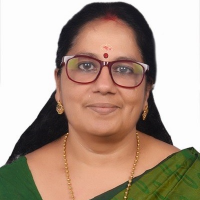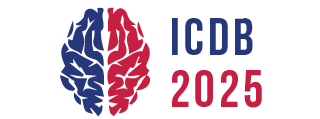2nd International Conference on
Dementia and Brain Disorders
November 06-07, 2025 | London, UK
Address: Building A, Bath Road, Heathrow Boulevard, Sipson, West Drayton, UB7 0DU, United Kingdom
ICDB 2025

Government College Kottayam, India
Abstract:
Epilepsy is an abnormal brain condition characterized
by the excessive synchronous firing of cortical neurons. An
electroencephalogram (EEG) serves as a diagnostic tool to identify the
underlying brain dynamics responsible for seizures. Neurologists must
continuously evaluate EEG recordings from the background activity during
preoperative stages to detect seizures, a process that can be tedious and
susceptible to errors. Therefore, automatic identification of seizure and seizure-free
EEG signals is crucial for effective treatment and diagnosis. This study introduces
a novel method for classifying seizure-free (interictal and preictal) and
seizure (ictal) EEG signals, utilizing features extracted from phase space
reconstruction (PSR). The dynamic characteristics of brain signals manifest as
elliptical patterns in phase space due to their oscillatory nature.
Consequently, the proposed method calculates the elliptical area and the
interquartile range of the Euclidean distances within the PSR as distinguishing
features. These features are then fed into a k-nearest neighbour machine
learning algorithm to identify seizure and seizure-free EEG signals. The
results demonstrate that the proposed features perform superior classification
in distinguishing between various seizure stages with minimum computational
time compared to existing methods. Thus, phase space features embedded with the
machine learning algorithm can serve as a reliable and robust technique for discriminating
and identifying seizure signals
Biography:
Dr. Sreelatha K.S. is an Associate Professor of
Physics at Government College Kottayam, Kerala, India. She holds an M.Sc. in
Physics from Mahatma Gandhi University, an M.Phil and a Ph.D. from the Cochin
University of Science and Technology, Kerala. With 24 years of teaching and
research experience, she has guided
Ph.D., M.Phil. and Postdoctoral students and supervised a large number
of M.Sc. projects. Her research interests include nonlinear dynamics, brain
dynamics, chaos, optical solitons, and nanomaterials. She has published 42
refereed research papers, edited two books, and delivered over 30 invited talks
